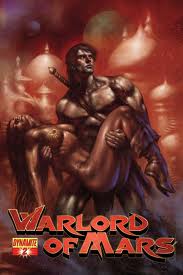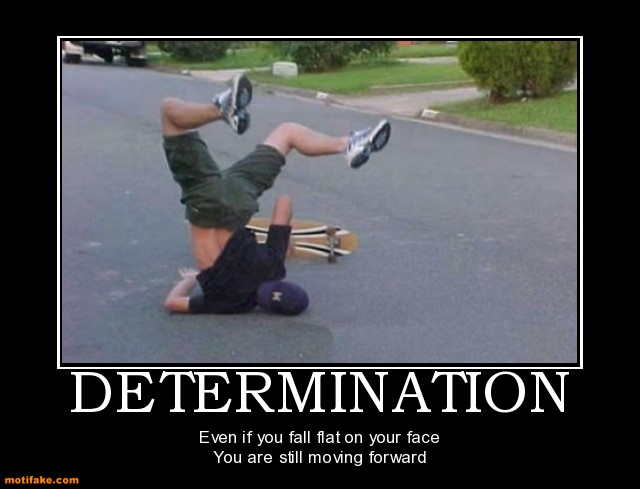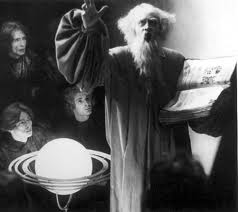40K EDITORIAL: Lessons from the 1st GT of 6th Ed.

Hey everyone, Reecius from Frontline Gaming here to discuss our first GT experience in 6th ed (the Golden Throne GT), how it worked from a rules perspective and how the early 6th ed meta looks.
First of all, a big thanks to Rob Pace from Heroes on Paper for putting the event together. It was their first year; they had a few crappy setbacks gearing up for the event (their store got broken into the week beforehand) which set them back getting terrain ready. It takes a LOT of effort and money to get a GT level event off the ground, and the fact that the event went so smoothly despite these problems shows how well put together it was. Plus, it is always a blast to get to actually play in a big event rather than TO one, so thanks to Heroes on Paper for putting together the fun tournament.
The Golden Throne was a really good measuring stick for 6th ed as they essentially used straight book missions and rules with nearly no modifications.
We at Frontline were pretty worried that the 6th ed rules were not going to be suitable for tournament play “out of the box.”
I will say, and with more than a little relief, that that is largely not true. Some of the rules just don’t work in a tournament for purely logistical reasons (which I will address) but for the most part if you run a local RTT and play right out of the book, not only will it work, it will be quite fun. Considering how much time, effort and money we’ve put into building up the tournament scene on the West Coast, you can imagine how much better this made us feel.

So what in the rules didn’t work so well?
The missions as is are not the best for a Grand Tournament. Why do I say this? While they do have a lot of balance from an overall perspective (each mission is good for a certain type of build) in a tournament we don’t have the luxury of playing each opponent in each mission. The reality of the situation is that pairings in these types of missions can and do determine who wins. For example, I brought my Nob Biker list (the Sons of AnOrky!) and in the mission “The Relic,” against the vast majority of armies in the game, I damn near auto-win, which isn’t fun. There is almost nothing most “normal” armies can do to stop the hard as nails Nob Bikers from scooting up turn 1, grabbing the Relic, and scooting off.
Or in Kill Points, if you have a Deathstar army such as the ever popular Draigowing (of which there were a LOT at this event) and you have an MSU army, or even just a normal Mechanized list, you are fighting a hugely uphill battle.
The Scourging is another one that is just too random. I played a Draigowing player that game (great game, Bobby!) who got the 4, 3, 3 objectives on his side of the table, and I got the 1,2,2. Well, the Paladinstar wisely just walked into the middle of these high point objectives and sat there all game. Plus, Draigo rolled up the Warlord trait that made him scoring, hahaha, so not much to be done. This mission is just too random as situations like this create scenarios that favor one player so much that it is not a level playing field, at all.
For a tournament, this is the worst situation possible in my opinion. You want the game to be as fair as they can be so that both players have as close as possible to an equal chance of winning. This is why almost every major GT in the country used tiered or layered missions in 5th ed. By providing multiple paths to victory, it allows the skilled player to play around a bad match-up.
I think that if you combine book missions and play them at the same time, you have a situation that stays true to what 6th is, but allows you to get around the bad match-ups. This is what we will be doing for our BAO style events.

Warlord traits were just too powerful when used straight out of the book in book missions, IMO. I can’t remember how many times people around me said they won the game because of their Warlord trait. Almost every time, it was the trait that made your Warlord scoring, or the trait that gave you +1VP for defeating a character in a challenge. In book missions, especially the right ones, this is game winning. For example, I played Tony from Turn 7 Wargamming’s Nids round 6 of the event and rolled the trait that gave me +1VP for winning a challenge. We were playing the Relic mission, and that essentially won me the game. As his Tervigons couldn’t refuse a challenge, my Warboss on a Bike was faster than his Bugs and almost assured to beat them in a challenge, and we HAD to go at one another for the objective, Tony really got hosed. By turn 2, I had already earned more VPs than the primary objective was worth.
His Warlord trait did nothing. My Warlord Trait forced him to keep his Flyrant out of the combat that determined the game as he knew I would issue a challenge with my Warboss and probably kill his Flyrant. These kinds of stories were heard all over the tournament. Every combat character was rolling on the personal traits every time as these traits were so damn powerful for those types of characters.
I think a good compromise for the time being is to allow each player to roll and then choose any of the three traits for that number. This I think will at least help to mitigate the huge advantage Warlord Traits can provide by giving characters that won’t auto-choose personal traits a breadth of options to let them fight back. Also, with layered missions where the bonus VPs won’t count for as many points, the Warlord Traits won’t be so advantageous.
Alternating terrain placement simply wouldn’t work in most tournament formats, IMO, as it just takes too long. We were playing 1,500pts at the Golden Throne and I think it was just right. With 2hour and 15minute time limits, most games were finishing to a natural conclusion within that time frame. Of course as we get better at the game we will all speed up, but even between players who largely knew the rules we still had a number of games not playing through turn 4. Close combat, particularly large, complex combats with diversified units, just takes a long time. There just isn’t a lot that can be done about it. A hallmark of 6th edition I am finding so far is that you roll lots and lots of dice to see little to nothing happen. I will be REALLY curious to see how NOVA plays out with 2,000pt limits.
Random Terrain was a bit of a bummer. I didn’t use it in any of my games as both my opponents and myself either never went into mysterious terrain or forgot it! I say that random terrain isn’t the best choice though, as a lot of player that did use it were seeing their units getting eaten by spooky trees, or through a combination of Warlord Traits and beneficial terrain rolls, getting nearly invincible units (reroll armor saves on terminators, for example).

Random Charge lengths stink. Point blank, and I will make no apologies about hating this rule because it flat out isn’t fun. I understand why it is in the game to an extent (by the same logic, shouldn’t weapon ranges be random, too?) but I think a straight 2D6” is just TOO random. I can’t count how many games were lost because of failed charges from 3” away in the open. When you outmaneuver your opponent, and then just through dumb luck fail a charge that costs you the game, that sucks ass. There is nothing fun about it.
I would be very interested in seeing how the community felt about introducing a tournament rule that states you could choose to take a 6” charge instead of rolling 2D6” if your charge move does not trigger a difficult terrain check (you are charging through the open). I think that this would make the game more enjoyable and make assault armies more reliable and as a result, more popular in tournament play. What do you all think about that? Fun? Too much of a change? too soon for something like this?

What Worked Well
The bonus points worked really well. The team and I were not liking First Blood at all as it could mean the game in a lot of the book missions, but it was not as big of a deal as we had initially seen in our play testing. It was also quite fun and tense to see who would get the First Blood bonus points and there were lots of war stories being swapped about how and when First Blood was earned. Particularly if you use layered missions were the points earned from First Blood do not count for as much of the total, I think it is a good mission condition as it offsets the advantage of going second as a lot of folks have pointed out.
The terrain rules work quite well, and I think are a general improvement over 6th.
Fortifications were no big deal. While no one brought a Skyshield, there were Aegis and Bastions in play and no one had any issues with them. I quite like using terrain and we will be play-testing more of it. I still feel that the Fortress of Redemption and Skyshield are too big, but I am definitely more open-minded to giving it a try now than before this event.
The deployments worked fine, even Hammer and Anvil. Although, I must say, the tables at this event were very well spaced and were not butt-to-butt as with larger events, so that is definitely something to consider. You definitely did have to walk around the table a great deal in Hammer and Anvil, and so I think it may not be suitable for some tournaments due to space restrictions.
In general, the rest of the rule set worked really well and was a lot of fun in a competitive setting. Wound allocation was a rude awakening for a lot of folks, as we feared, but we’ll get used to it.
Random Objectives were no big deal. As most of them were beneficial it encouraged players to go out and get them. The result which explodes was lame, but as my teammate Will pointed out, it makes taking MSU scoring units more of a risk, which is a very good point.

What about the Meta?
So now let’s discuss what the meta looks like in 6th now that we’ve got a GT level event under our belts.
First of all, what I know a lot of you are wondering: the finalists (lists are approximate):
1.) Jy2 with his Flyer based Necrons (Doom Scythe x 2, Night Scythe x 2, 5xWraiths x2, Destroyer Lord, A.Barge, 5xWarriors x4)
2.) Christian with his MSU, Coteaz Grey Knights (Coteaz, 3xAcolytes in Psybacks x4, Psyfilmen x2, Ven.Pysfilmen, Dreadknight, 5xPurifiers in Rhinos x2)
3.) Frankie and his Dark Harliestar (Vect, Fuegan, Eldrad, 10xHarlies, 3xJet Bikes x 3, 5xWarriors in a Venom)
4.) Sam and his Sisters of Battle (St.Celestine, 10xSisters x 2, 10xH.Bolter Retributors x2, Exorcist, 5xDominions in M.Melta Transport x2, 10xSeraphim)
Pretty much exactly what we predicted would be there: a Deathstar list, an MSU list, a Flyer heavy list and a balanced list. The balanced list was also comprised of lots of skirmishing style, close ranged shooting units as I was saying would be very effective in last week’s article. Plus, St. Celestine is crazy good in book missions!
So what we thought would come to pass as a community, largely did. I was also really happy to see so many Tyranid players and to see them doing really well. Nids got a big boost this edition and I can’t wait to get my Bugs finished so I can take them to an event, myself.
Tau were also doing very well, and were present in many lists either on their own or as allies.
Allies were not overpowering at all as some feared, they really just brought a ton of diversity to the table top, and helped to shore up the weaknesses of a lot of armies. I know my Eldar allies really saved my bacon against the Grey Knights and Bugs that I would have otherwise struggled with as Orks. I think allies are a great addition to the game and already was seeing some beautiful conversion work (I played a Grey Knight/Tau player that had his Crisis Suits converted to look like mini-Dreadknights being piloted by Grey Knights!).
Jy2’s flyers were pretty dominating. He only lost a single game to Christian, and barely beat Frankie’s Dark Harliestar, but as I understand it really had his way with his opponent’s in his other games due to his expert use of flyers and their inherent durability. As AA weapons become more prevalent I am sure this advantage will be mitigated, but for now it really does appear that the flyer is ascendant as we had feared. Of course, as we gather more data this assessment may change, but for now, prepare yourself for them.
What this largely means to me is a confirmation of our theories to a large degree: if you bring an extreme list you will overpower most of your opponents, particularly in the early days of the edition. If you have a balanced list, you can pull it off, but it will take a larger degree of skill and luck.
The floor is your ladies and gentlemen.





